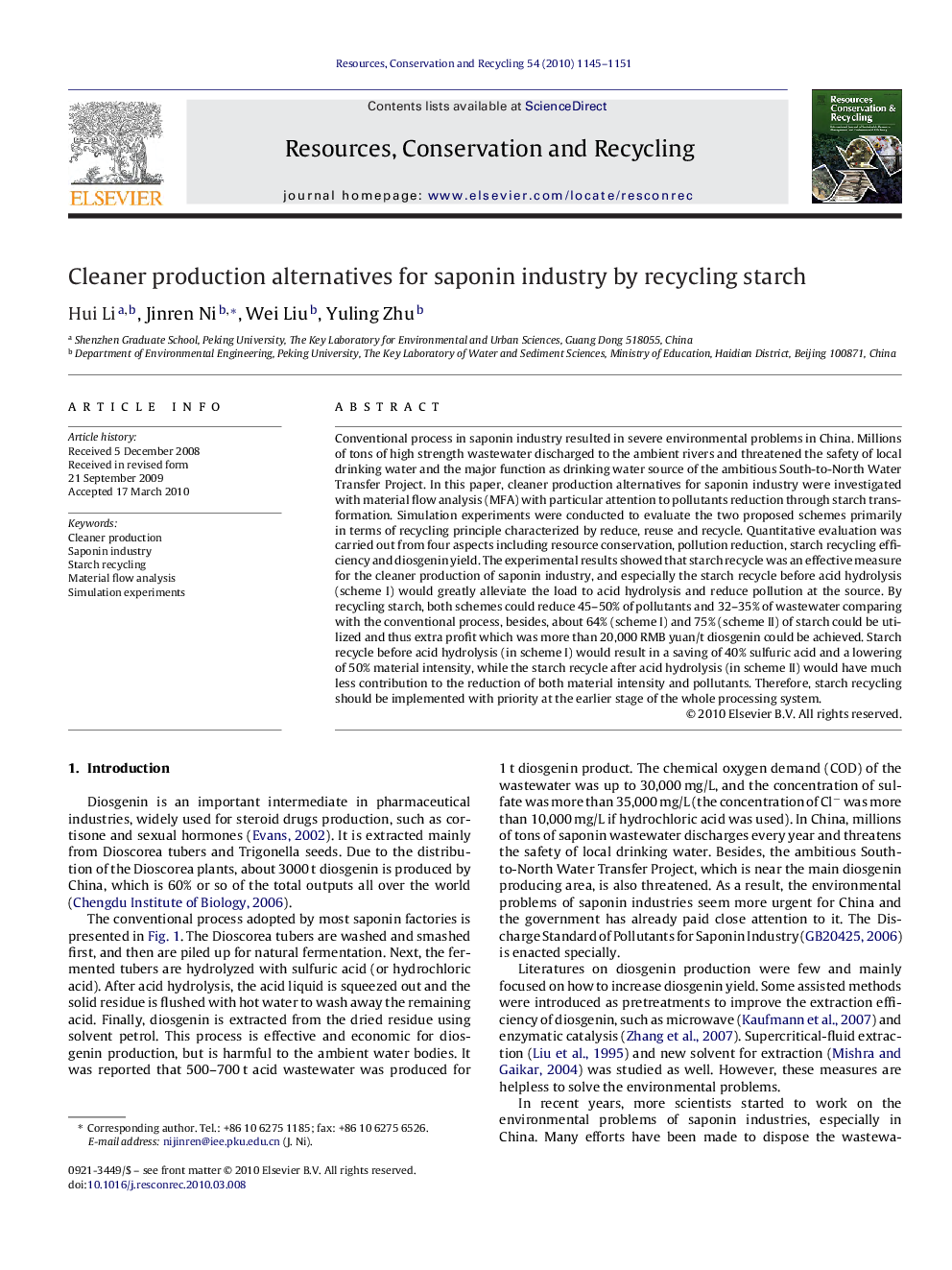| Article ID | Journal | Published Year | Pages | File Type |
|---|---|---|---|---|
| 1063801 | Resources, Conservation and Recycling | 2010 | 7 Pages |
Conventional process in saponin industry resulted in severe environmental problems in China. Millions of tons of high strength wastewater discharged to the ambient rivers and threatened the safety of local drinking water and the major function as drinking water source of the ambitious South-to-North Water Transfer Project. In this paper, cleaner production alternatives for saponin industry were investigated with material flow analysis (MFA) with particular attention to pollutants reduction through starch transformation. Simulation experiments were conducted to evaluate the two proposed schemes primarily in terms of recycling principle characterized by reduce, reuse and recycle. Quantitative evaluation was carried out from four aspects including resource conservation, pollution reduction, starch recycling efficiency and diosgenin yield. The experimental results showed that starch recycle was an effective measure for the cleaner production of saponin industry, and especially the starch recycle before acid hydrolysis (scheme I) would greatly alleviate the load to acid hydrolysis and reduce pollution at the source. By recycling starch, both schemes could reduce 45–50% of pollutants and 32–35% of wastewater comparing with the conventional process, besides, about 64% (scheme I) and 75% (scheme II) of starch could be utilized and thus extra profit which was more than 20,000 RMB yuan/t diosgenin could be achieved. Starch recycle before acid hydrolysis (in scheme I) would result in a saving of 40% sulfuric acid and a lowering of 50% material intensity, while the starch recycle after acid hydrolysis (in scheme II) would have much less contribution to the reduction of both material intensity and pollutants. Therefore, starch recycling should be implemented with priority at the earlier stage of the whole processing system.
